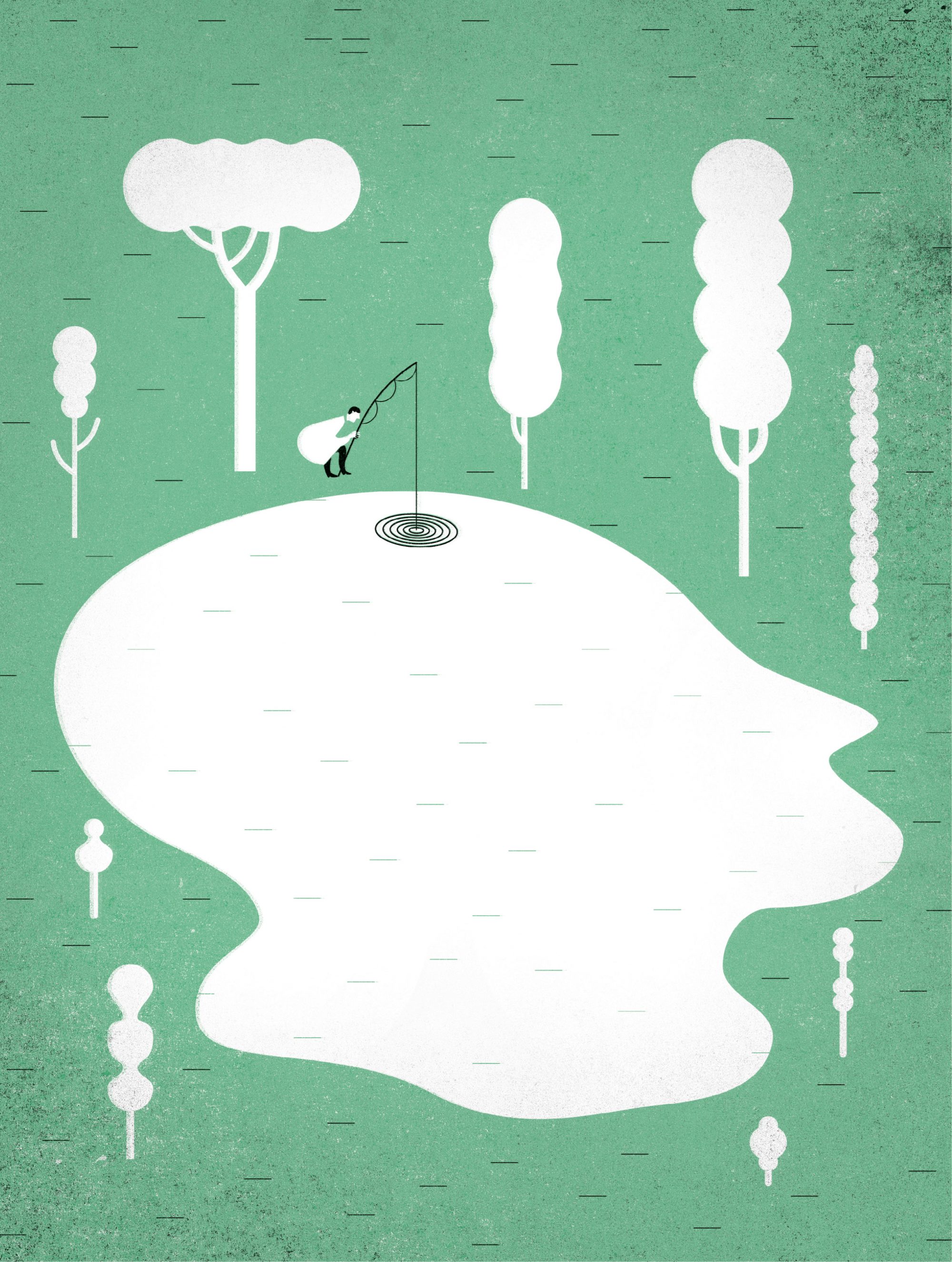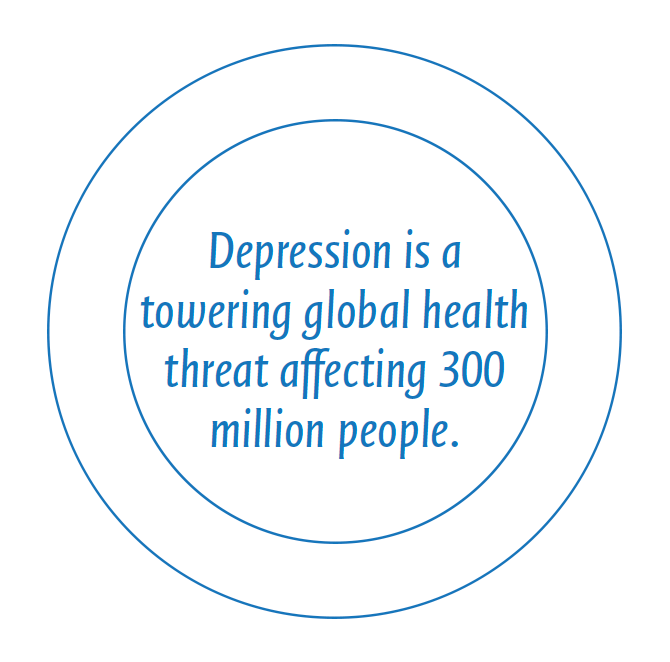
Interview
Deep Secrets
The human brain is capable of understanding gravitational waves. It can produce equations, arguments, music. But will it ever make sense of its own inner workings? We posed the question to neuroscientist Cori Bargmann.
By Eva KieslerWhen a Caenorhabditis elegans worm smells diacetyl, it has no time to twirl. Instead, it sets off toward the smell like a bullet, its microscopic mind aflame. Ahead are probably soil microbes, the worm’s idea of a delicious meal.
The behavior should be somewhat relatable because diacetyl attracts humans, too. Used industrially as butter flavoring, it really does smell of the good life (think croissants, popcorn, Chardonnay). Yet there is reason to suspect that the worm’s appreciation of the scent is more refined than ours. Although C. elegans may be primitive in almost every other sense, it is king of olfaction in the animal kingdom.
It was Cori Bargmann who discovered, in the early 1990s, that the humble creature will detect puffs of almost any chemical present in its natural environment, a skill it owes to possessing close to 1,000 smell receptors (dogs have roughly 800, while we humans get by with 400).
Moreover, she found that different smells produce specific behavioral outcomes: A worm inside a Petri dish will chase after odors it perceives as good, flee bad ones, and calmly ignore neutrals.
To Bargmann, whose work centers on understanding how sensory experiences lead to behaviors, the worm’s superb sniffing skills provide fertile scientific ground. For close to three decades, her lab has developed increasingly advanced tools to manipulate olfactory neurons and receptors in C. elegans, and has studied how the animals’ reactions vary in response to particular smells. With such experiments, she has shed light onto the basic processes by which the brain assembles cues from genes, experiences, and the environment to make us think, feel, and act—processes that rule all animals’ minds, big or small.
Bargmann, who is the Torsten N. Wiesel Professor at Rockefeller, runs her lab while also serving as head of science at the Chan Zuckerberg Initiative, an organization with a $3 billion investment in biomedical research. We spoke with her in her Rockefeller office, seven stories above New York City’s East River.

Behavior seems inherently different from many other aspects of our biology—less tangible than, say, metabolism or immunity. To study its essence, where do you even begin?
My approach has been to explore how genes influence the brain’s activity. Many behaviors are in fact evolutionarily hardwired and genetically available at birth, which is fascinating. Newly hatched ducklings, for instance, will instinctively bond with the first moving object they lay eyes on, usually their mother.
By asking what makes such a system work, we might learn a lot about the molecular and cellular aspects of behavior. Are parts of a newborn’s brain prewired to solve particular problems? And what might this wiring actually look like?
What made you decide to pursue these questions in a tiny worm rather than in humans, or another animal more similar to us?
People are such complex organisms. So many factors determine how we behave—our DNA as well as our environment, experiences, thoughts, feelings. And if you want to understand how genes produce behavior at the most rudimentary level, C. elegans provides a very practical model. The worm’s nervous system has been fully mapped, and can be systematically manipulated using powerful genetic tools. In a sense, it’s a microcosm that allows us to see the inner workings of a brain more clearly.
“The brain is incredibly robust and forgiving. It is quite happy to receive noisy and chaotic information and collapse it to produce a perfectly coordinated course of action.”
There are, of course, many other ways to approach these questions, and part of what makes neuroscience so much fun is that it’s always been inclusive of people working in different systems—squid, rat, fruit fly, songbird. Some scientists will argue that to truly understand how our brains work, we need to study humans since no other organism is able to generate the same complexity of cognition and communication. But ultimately, I think all of these pieces will come together to create a deeper understanding.
Can you give us an idea of what that deeper understanding might look like?
Historically, big breakthroughs tend to happen when insights from different systems combine to illuminate an underlying principle. For example, not long ago we thought of brain cells as individual cogs in a machine, each performing a dedicated function. But we’re learning that the brain is far more dynamic and holistic than that. Its activity tends to manifest in large sweeps, called dynamic states, moving back and forth through many cells and brain regions in parallel, like water flowing through a set of sluices.
When these holistic activity states were first seen in human brain scans about ten years ago, most people didn’t think they meant much. It was only after their existence was discovered in other animals, including C. elegans, that we realized we needed to pay attention to them, and that they might in fact tell us something very fundamental about the way nervous systems work.
How else is our understanding of the brain changing?
Modern technologies are gradually revealing how much there is we don’t know. About a decade ago, for example, scientists studying artificial intelligence set out to build computer systems based on neuroscience principles—systems that were supposed to solve problems in the same way the brain does. But it turned out that those systems didn’t operate like the brain at all, presumably because we hadn’t been thinking about neural networks in the right way to begin with. In the last couple of years, however, AI systems based on different principles have emerged, and to everyone’s surprise they’re starting to look more and more like the brain. This has resulted in a very interesting dialogue taking place between the two fields.
 Another transformative technology is optogenetics, which makes it possible to activate or silence an animal’s neurons by shining light on the tissue. In one experiment, a group of scientists used it to shut off motor neurons in the right half of a mouse’s brain, keeping the left-side motor neurons active. With a broad intervention like that, you would think havoc could ensue; the mouse might fall over, get confused, or have a seizure. But instead, the mouse simply began walking around in circles.
Another transformative technology is optogenetics, which makes it possible to activate or silence an animal’s neurons by shining light on the tissue. In one experiment, a group of scientists used it to shut off motor neurons in the right half of a mouse’s brain, keeping the left-side motor neurons active. With a broad intervention like that, you would think havoc could ensue; the mouse might fall over, get confused, or have a seizure. But instead, the mouse simply began walking around in circles.
This tells us that the brain is in fact incredibly robust and forgiving. It is quite happy to receive noisy and chaotic information and collapse it to produce a perfectly coordinated and seemingly deliberate course of action.
So what’s missing from our picture of the brain and how it operates?
That’s tricky to answer since we don’t know what we don’t know. What’s certain is that, at this point, we are not even close to understanding how any nervous system works, including the most primitive ones. We know how information moves through a synapse, and we know that specific brain regions are involved in particular tasks, like movement or face recognition. But there’s a huge disconnect between looking at individual cells and a system made up of 86 billion cells, and to bridge that gap we need to learn how information from these billions of synapses gets organized, how it flows through the brain, and how it becomes rewired under different circumstances.
In particular, I’m very interested in how the brain is affected by emotional or motivational states. Say, for example, that you smell meat cooking on a grill. If you’re hungry, it may cause you to salivate, but if you have the flu, the exact same stimulus may make you nauseous. What changed, and at what level?
Understanding this will be very important for brain science, and I’m convinced it will have profound clinical relevance. Drug addiction, for example, seems to involve a shift in motivational state—you begin to crave a substance you were previously neutral to or merely attracted by. Likewise, depression shifts the brain’s emotional state so that we perceive things differently.
Do worms get depressed?
I don’t think so, but they do have serotonin and dopamine, neurotransmitters that have been linked to mood disorders in people. They also have oxytocin, but I don’t think they use it to fall in love. Clearly, their psychological processes don’t align with ours in any simple way.
Even so, I think C. elegans will help us answer basic questions about motivational states in general, and maybe even develop strategies to manipulate these states with drugs—something that could ultimately lay the foundation for new ways to manage brain-related human disease. We obviously have a long way to go in that regard, and I’m sure the work will continue to turn up new surprises.